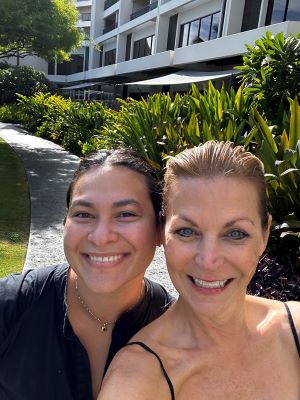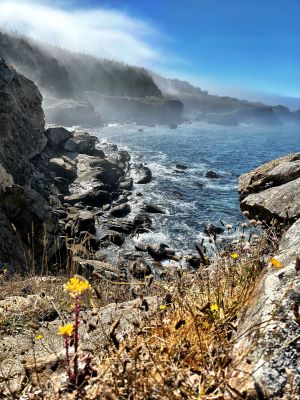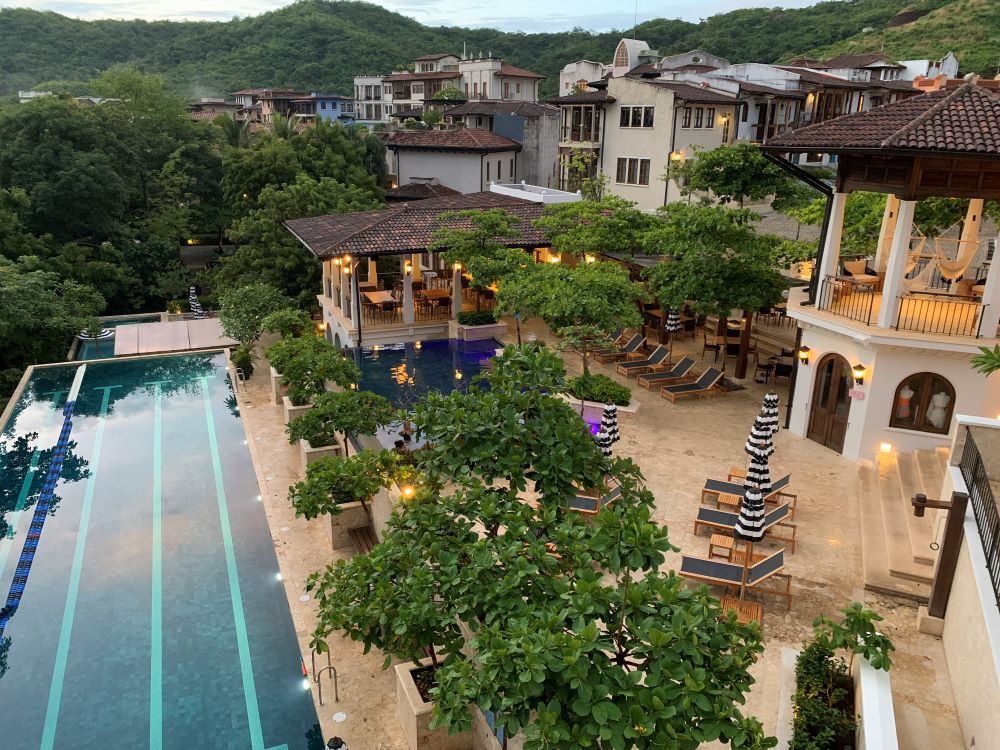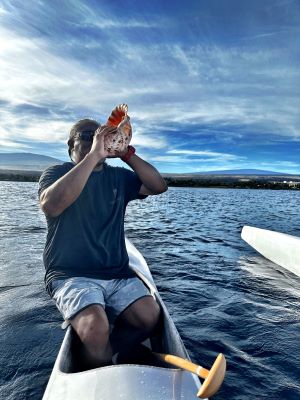In a world seeking a balance between luxury and sustainability, off-the-beaten-path destinations provide a new kind of prestige—one built on authenticity and exclusivity, honoring the land, the community and delivering lasting impact.
We’ve all heard the stories coming out of Europe this past summer of severe overcrowding, protests and backlash by locals, and shortages of water and other resources in hot spots across Spain, Italy and Greece.
These reports should be considered a warning to business and leisure travelers alike, a sign that it’s time for us to come up with creative alternative solutions to international meetings and incentives that appeal to attendee preferences while keeping the peace with destinations that are asking us to take a step back for a moment.
[Related: A DIGITAL DEBUT! Download your free copy of our new publication, Incentives Today.]
Scanning the Horizon
It's time we expand our horizons.
In early October, United Airlines announced the largest international expansion in its history, adding service to eight new international destinations that might be considered unique locations for incentives, in Greenland, Italy, Spain, Portugal, Mongolia, Taiwan and Senegal.
How we travel is evolving, and incentive travel is one area in particular that is seeing a massive shift. As event marketers increasingly seek out exclusive, less-crowded, perhaps lesser-known destinations for their groups and corporate meetings and events, we have to consider the root cause.
There’s a desire to avoid crowds, but incentive travel trends also point to a need for event marketers to provide bespoke experiences with a more mindful, authentic and memorable approach to designing incentive programs in which luxury takes on a whole new meaning.

Sustainability and Cultural Sensitivity
Destination management companies (DMCs) and destination marketing organizations (DMOs) are shifting their focus and taking a leadership approach regarding land and culture preservation and stewardship.
For many years, Sonoma County Tourism (SCT) has partnered closely with the local community and elected officials to identify ways to foster land preservation while welcoming business events and tourism into their county. SCT became the first destination stewardship organization (DSO) in the country in 2018, with the primary objective of employing best practices in marketing and sales that focus on the needs of the destination and the local community.
To accomplish this, SCT follows seven guiding principles in its Stewardship Master Plan published in May 2023. A few highlights include the priority to have a net positive impact on the quality of life for residents, businesses and communities; promoting responsible experiences of lands and communities; encouraging policies that prioritize the longevity of natural resources; and celebrating their unique culture and heritage while embracing and advancing diversity and inclusion.

During a recent conversation with Jonny Westom, vice president of business development at SCT, he reflected on those guiding principles and noted, “Our goal is to attract groups and visitors who prioritize the same goals—being respectful of the land, businesses and residents, and truly value the natural beauty and resources Sonoma County offers. Ultimately, our guests experience an authentic connection with our local culture and environment, which resonates with planners and companies looking for unique, quieter spaces.”
Another destination excelling in protecting its land and culture is Costa Rica, where approximately 25% of the country’s land is protected from development and set aside for national parks, wildlife refuges and biological reserves, making Costa Rica one of the world leaders in environmental conservation and sustainable tourism.
Jannick Wagemans, business unit manager for Premio DMC Costa Rica, said, “The majority of our groups know they’re stepping into a space where nature is preserved. The shift isn’t just about disconnecting from routine but about finding inspiration in environments that prioritize environmental stewardship and offer distinctive, off-the-beaten-path experiences.”
Hawai'i Island hosts fewer groups and tourists than the Islands of O'ahu and Maui, which makes it the ideal destination to escape large crowds and have an immersive and authentic cultural experience.
The Mauna Lani, an Auberge Property, has made culture, sustainability and the local community priorities for decades. Its Hale’I’ike, or “House of Knowledge,” located in the lobby is the cultural center of the resort. It offers guests and groups an immersive and authentic cultural experience showcasing artifacts, traditional art and space to learn and share stories.
Aviana Finn, associate director of catering and events at Mauna Lani and a Hawaiian native who recently returned to the Island after working in corporate events in New York City, is passionate about preserving Hawaiian culture and supporting the Indigenous Hawaiian community. This includes advocating for affordable housing, honoring local traditions and promoting local performers and entertainment that feature traditional Hawaiian music, dance and art that existed before Western influences came to the Island.
[Related: Luxury Redefined: The Appeal of Craftsmanship and Hands-on Learning in High-End Event Programs]
Finding a Convenient Balance

Accessing the road less traveled often requires…well, more travel! In the past, groups expected a short 20- to 30-minute transfer from the airport to their hotel; however, increasingly, groups are happy to travel the 60 to 90 minutes from nearby airports to access the unique offerings of more-remote destinations.
Westom and SCT offer group options based on their travel priorities. For example, there are benefits to flying into San Francisco, like multiple flight times from an extensive list of feeder cities. This is appealing, especially for participants who haven’t visited Northern California before.
“Guests go through the city, cross the iconic Golden Gate Bridge and everything changes,” Westom said. “You travel from a strong cityscape to the countryside and vistas of the Bay and Pacific Ocean—a beautiful transition that guests enjoy while making the 70-mile journey.”
Other guests may prefer to fly directly to the heart of Sonoma County and spend their time working on the plane. It becomes the personal preference of the traveler. How do they want to spend their time traveling?
Wagemans noted that once groups arrive at their hotel, they often prefer to keep experiences and activities within 30 minutes of where they are staying.
Adventure and Personalization
The concept of luxury also continues to shift toward personalization and cultural engagement. Today’s incentive groups expect more than opulent and comfortable accommodations; they seek exclusive encounters and authentic moments.
“Clients want more than a luxury hotel experience,” Wagemans notes. “They’re looking for opportunities to connect with our culture—like joining a local family at their Hacienda for a traditional Costa Rican lunch and a horseback cattle drive on a working ranch.”
These one-of-a-kind encounters offer a depth that isn’t available in commercialized, high-traffic areas, allowing travelers to leave with stories that truly reflect the character of the destination while supporting the local community.
In Sonoma County, Westom sees this trend materialize through highly personalized, artisanal experiences.
“Incentive groups come here not just for wine, but for activities that connect them to the land,” he said. “From guided hikes through the redwoods to wine-blending sessions with local vintners and tours of farms followed by cooking classes with local chefs that utilize locally grown ingredients and products. These activities create an exclusive narrative that leaves a lasting impression and gives back to the community at the same time.”
[Related: Luxury Redefined: The Value of Personalized, Immersive and Human-Centric Luxury Experiences]

Turning Challenges Into Rewards

While off-the-beaten-path locations offer distinctive appeal, they come with logistical challenges that require thoughtful planning. Longer travel times, limited infrastructure and specific local guidelines can be hurdles for incentive groups.
Collaborating with a local DMO, DSO or tourism office can provide insights to tailor experiences specifically for your group.
“Some clients book hotels before consulting with us only to find their desired experiences are hours away,” Wagemans explained. “Early collaboration with a local DMC ensures a cohesive itinerary that aligns the location with the activities and experiences they envision.”
Westom also underscores the importance of setting expectations with clients.
“The journey is part of the experience,” he said. “We educate clients on the scenic travel routes and the charm of the journey, making the transition from urban hustle to wine country part of the appeal.”
The Future of Luxury in Incentives
As luxury travel evolves, incentive programs and the DMOs, DSOs and DMCs that support them are setting new standards for meaningful, sustainable experiences that prioritize nature and the environment, local businesses and supporting the surrounding communities.
For incentive hosts or organizers, destinations like Costa Rica, Sonoma County and Hawai'i Island offer the opportunity to create exclusive, impactful programs that resonate with attendees on a personal level. These unique destinations allow travelers to forge connections with nature, locals and artisans that go beyond surface-level tourism and create an emotional connection along the way.
 With love and luxury, Laurie
With love and luxury, Laurie







